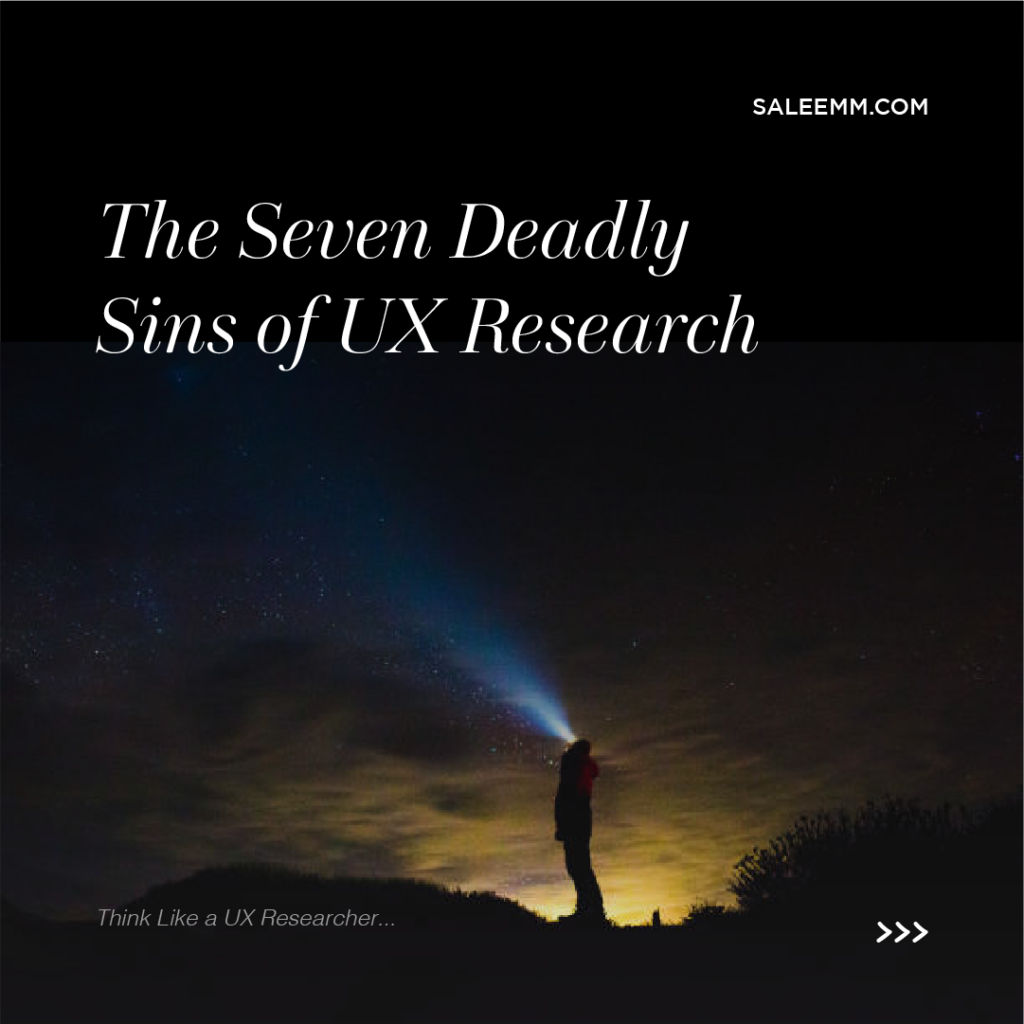User experience (UX) research is an essential practice in the design process, allowing teams to understand user needs, validate ideas, and ensure that the end product aligns with both user expectations and business goals. However, like any discipline, UX research can go wrong if not conducted thoughtfully and carefully. When common mistakes are made, they can lead to misinterpretation of data, flawed designs, and a poor overall product experience. Here are the seven deadly sins of UX research to avoid at all costs.
1. Assuming You Know the User
One of the gravest mistakes in UX research is assuming that you already know your users. Designers and stakeholders often believe they can intuit what users want or need based on personal experience or assumptions, leading to confirmation bias and incomplete research.
Why it’s a sin: Without conducting proper research, you risk missing crucial insights about user behavior, pain points, and motivations. These blind spots can lead to a product that doesn’t resonate with its intended audience.
How to avoid it: Always begin with foundational research. Conduct user interviews, surveys, or ethnographic studies to understand your users. Let the data—not assumptions—guide your design decisions.
2. Focusing Solely on the “Happy Path”
The “happy path” refers to the ideal, smooth experience that a user would take when everything goes as planned. While it’s important to design for these scenarios, focusing exclusively on the happy path can lead to overlooking potential user frustrations or failure points.
Why it’s a sin: Real-life users encounter errors, confusion, or distractions, and they may not use your product exactly as intended. Ignoring edge cases or potential failures can result in a design that is frustrating or unusable when users deviate from the intended flow.
How to avoid it: In addition to testing the happy path, investigate error paths and alternative user journeys. Conduct usability tests with real users who may make mistakes or try unconventional methods, and design with resilience to unexpected user behavior.
3. Conducting Research Too Late
Waiting until the design is almost complete to conduct UX research can undermine its effectiveness. At this point, making significant changes is difficult, and teams may be reluctant to pivot even if research reveals fundamental problems with the design.
Why it’s a sin: Conducting research too late in the process limits your ability to respond to user feedback and implement meaningful changes, resulting in a product that may fail to meet user needs.
How to avoid it: Integrate research into every stage of the design process, from ideation to prototyping to post-launch. Continuous feedback from users ensures that the product evolves in alignment with user expectations.
4. Cherry-Picking Data
Cherry-picking involves selectively using data that supports your preconceptions while ignoring data that contradicts them. This is a form of confirmation bias, where you unintentionally steer research outcomes toward a desired conclusion.
Why it’s a sin: Ignoring data that doesn’t align with your assumptions leads to a skewed understanding of user needs and behaviors, resulting in a product that is disconnected from reality.
How to avoid it: Approach research with an open mind. Analyze all data, even if it contradicts your expectations or reveals uncomfortable truths. Present both the positive and negative findings to stakeholders to create a balanced view.
5. Using Leading or Biased Questions
The way you frame questions in interviews or surveys can significantly influence the responses you receive. Leading questions, which hint at the “correct” answer, can distort user feedback, while biased questions might only reveal surface-level insights.
Why it’s a sin: Leading or biased questions prevent you from getting authentic, valuable feedback. Users may feel pressured to respond in a way that aligns with your expectations, providing data that is unreliable or skewed.
How to avoid it: When conducting user interviews or surveys, use neutral, open-ended questions. For example, instead of asking, “How much do you like this feature?” ask, “What are your thoughts on this feature?” This approach encourages honest, unbiased responses.
6. Overloading Users with Jargon
Users are not UX experts, and overwhelming them with technical or industry jargon during research sessions can hinder their ability to provide useful feedback. When users don’t fully understand what is being asked of them, they may provide vague or inaccurate answers.
Why it’s a sin: If users don’t understand the questions or the context of the research, the feedback you collect will be confusing or irrelevant. Miscommunication can lead to designs that are out of touch with user needs.
How to avoid it: Speak in clear, simple language that is free from jargon or overly technical terms. When introducing tasks or questions, ensure that users have the context they need to engage fully in the research.
7. Neglecting to Share Research Findings
After completing a research study, it’s common for UX designers and researchers to distill the findings into reports. However, if these insights are not shared effectively with key stakeholders, including developers and product managers, they can easily be overlooked or underutilized.
Why it’s a sin: Research findings that are siloed or ignored will fail to impact the final product. This renders the research process pointless and can result in the creation of features or designs that don’t address actual user needs.
How to avoid it: Present research findings in clear, actionable ways. Share results with all relevant stakeholders, and ensure that research influences design decisions. Visual aids like user personas, journey maps, or videos of user testing sessions can help convey insights more compellingly.
Conclusion
UX research is vital for creating user-centered products, but only if conducted correctly. By avoiding these seven deadly sins, UX designers can ensure that their research delivers meaningful insights that lead to better, more user-friendly products. Whether it’s avoiding assumptions, conducting timely research, or ensuring the proper communication of findings, thoughtful UX research is key to creating designs that truly resonate with users and drive success.
